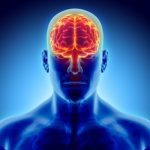
Anxiety is an especially upsetting experience for anyone. It is a psychiatric disorder which is on the rise (Bandelow & Michaelis, 2015) and given the current situation with Coronavirus, it is not surprising that mental health issues are one of the main causes of concern for health officials. It is thought that the global situation means 15% of the general population are dealing with anxiety. It is twice as common in women as it is in men although there is a trend that this beginning to even out (Baxter et al., 2013; Bandelow & Michaelis, 2015).
How Is Anxiety Experienced ?
For many, it is experienced as subjective sense of dread, perhaps of unease or foreboding. In others it is a an uncomfortable feeling of a vague fear or apprehension. It can be accompanied by characteristic physical sensations.
Ultimately, people suffer with potentially debilitating psychological or physiological conditions. the psychological can be a constant feeling of threat or worry whilst a physiological response is shortness of breath or a racing heart (tachycardia).
Classification Of Anxiety Disorders
Anxiety disorders are classified into the following:-
- Anxiety disorders are often described as non-psychotic disorders and comprise what is termed a Generalized Anxiety Disorder (GAD).
- Phobia
- Panic attacks or panic disorder
- Post traumatic stress disorder (PTSD)
- Obsessive compulsive disorders
Generalized Anxiety Disorder (GAD)
GAD is a disorder where the patient suffers excessive worry and anxiety that is difficult to control. The symptoms occur for days and in some cases nearly 6 months. They can be related to various traumatic events and activities. Adult US citizens number with a life time prevalence of GAD number 5% at the moment.
The symptom of this particular disorder are restlessness, feeling hyped up, on edge, readily fatigued or tired, irritability, muscle tension, sleep disturbance and insomnia, loss of concentration.
The impact generally is to cause significant stress and loss of judgement on everyday affairs.
The risk factors are:-
- female
- increasing age
- prevalence in the family
- an increase in stresses, history of physical and emotional trauma
- smoking
Chronic medical conditions such as cardiovascular disease, ling dosease, arthritis are greatest with those suffering anxiety. It also affects many who are separated or divorced. GAD is not often seen in those who are Latino, Asian or Afro-Carribean.
Medications include buspirone, benzodiazepines, antidepressants (SSRIs, [selective serotonin reuptake inhibitors], or serotonin-norepinephrine reuptake inhibitors (SNRIs)., imipramine) and in some cases the application of Cognitive-behavioral therapy (CBT).
Benzodiazepines are considered very effective anxiolytic drugs. Their use can lead to adverse effects like cognitive impairment, falls, sedation, as well as dependence, tolerance, rebound anxiety, and discontinuation syndrome. They are not regarded as a good first-line treatment option (Andrews et al., 2018).
Some herbal approaches are claimed to have considerable benefits and there is renewed interest in the application lavender oil as an inhalant for example (Donelli et al., 2019).
References
Andrews, G., Bell, C., Boyce, P., Gale, C., Lampe, L., Marwat, O., … & Wilkins, G. (2018). Royal Australian and New Zealand College of Psychiatrists clinical practice guidelines for the treatment of panic disorder, social anxiety disorder and generalised anxiety disorder. Australian & New Zealand Journal of Psychiatry, 52(12), pp. 1109-1172. (Article)
Bandelow, B., & Michaelis, S. (2015). Epidemiology of anxiety disorders in the 21st century. Dialogues in clinical neuroscience, 17(3), 327. (Article)
Baxter, A. J., Scott, K. M., Vos, T., & Whiteford, H. A. (2013). Global prevalence of anxiety disorders: a systematic review and meta-regression. Psychological medicine, 43(5), 897-910 (Article).
Donelli, D., Antonelli, M., Bellinazzi, C., Gensini, G.F., Firenzuoli, F. (2019) Effects of lavender on anxity: A sytematic review and meta-analysis. Phytomedicine 65 December 153099 (Article)



Leave a Reply